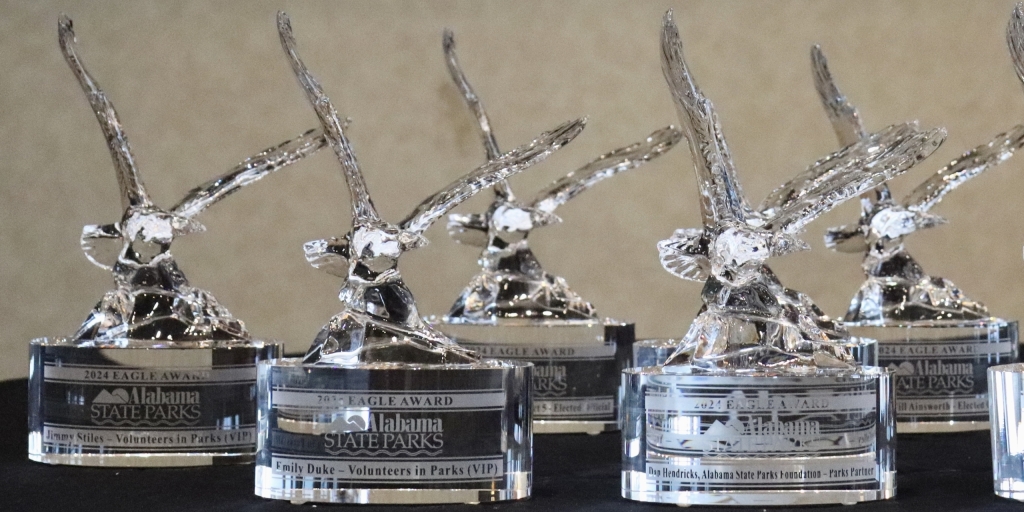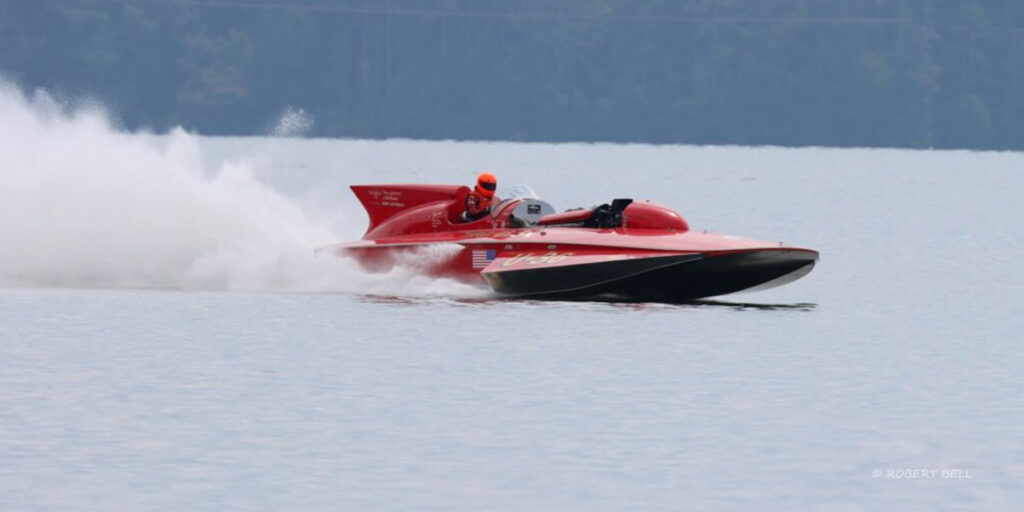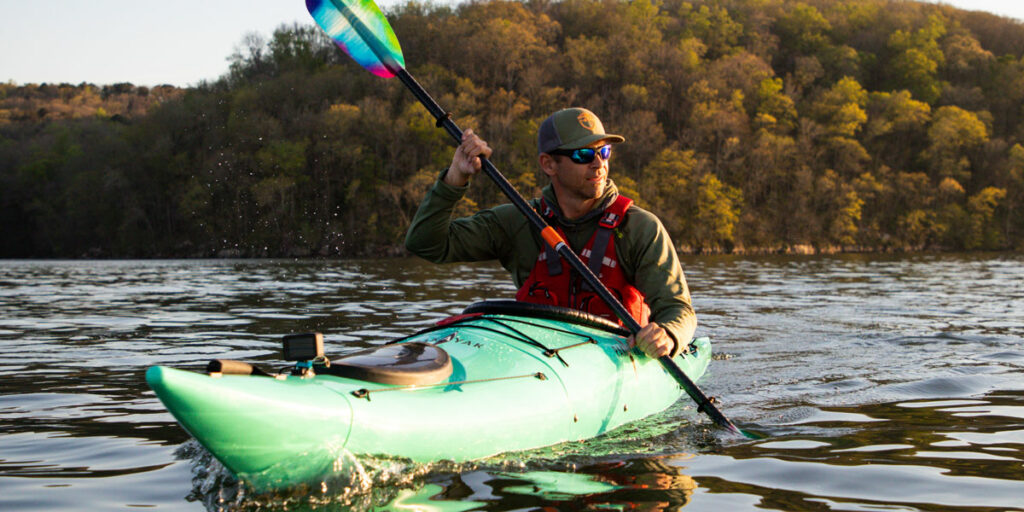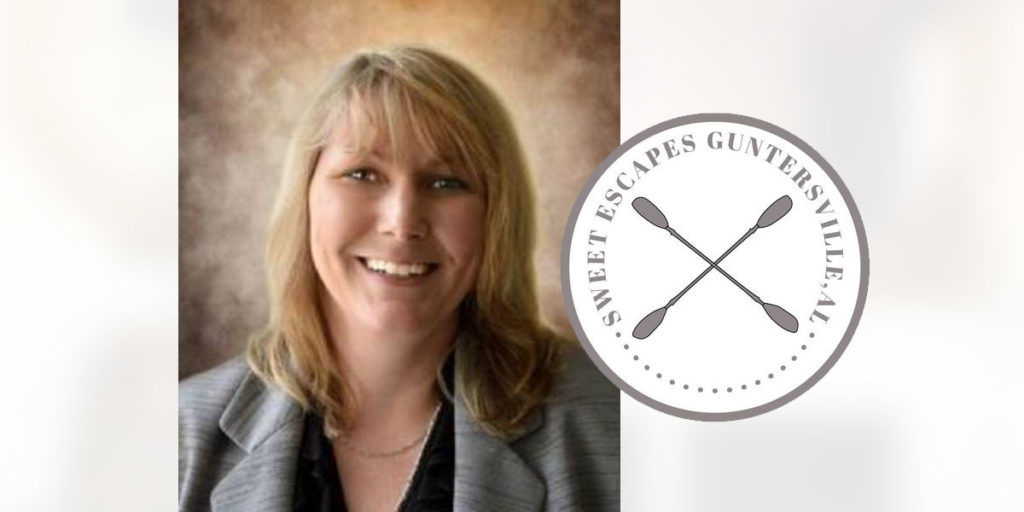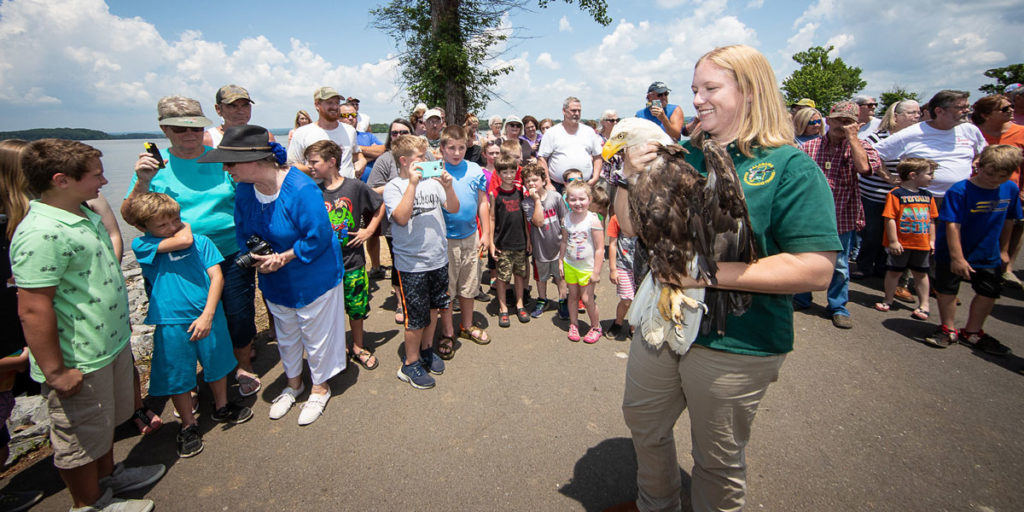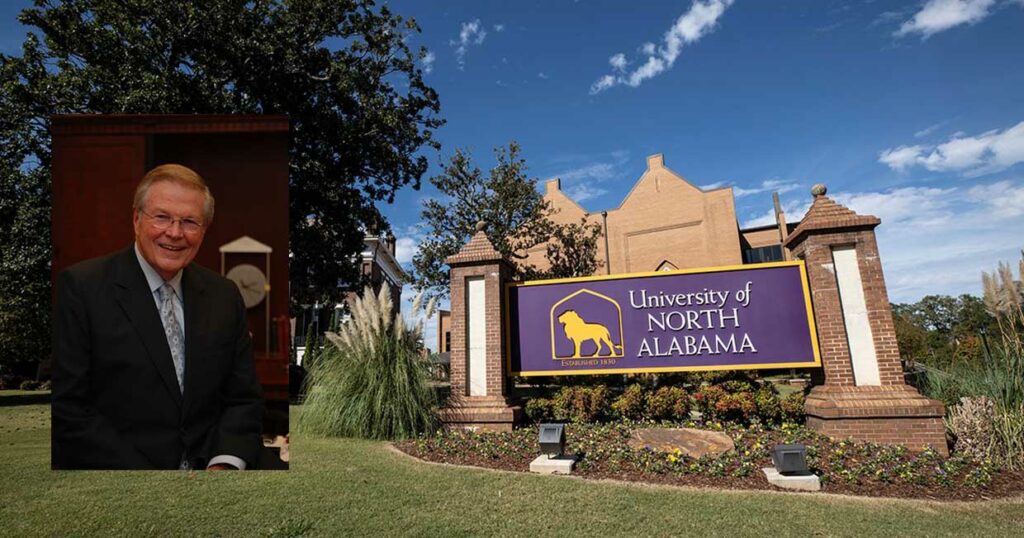Auburn University’s Southeastern Raptor Center recently released a rehabilitated 5-year-old bald eagle into the wild at Lake Guntersville State Park.
“It’s a great honor and privilege for the raptor center team to give injured, ill and orphaned raptors a second chance at living a full life back in the wild and to continue to contribute to the wild populations of those species,” said Stephanie Kadletz, raptor rehabilitation specialist. “It’s especially important with such species as the majestic bald eagle that was once endangered in the United States.”
The eagle had been transferred in September to the raptor center after being found in Marshall County unable to fly. A physical exam by center veterinarians found several primary flight feathers broken in half, as well as possible soft tissue damage.
The extent of the damaged feathers required imping, a process that joins a broken feather to a replacement by inserting into the shaft of both feathers a thin piece of bamboo, metal wire or other material and applying a bit of adhesive, according to the Audubon Center for Birds of Prey.
In this case, raptor rehabilitation specialists used the bird’s own broken feather quill to attach the new feathers. Imping isn’t painful for a bird since, like human hair or fingernails, feathers are dead structures made of the protein keratin.
“The donor feathers came from a patient that did not make it, but with them we were able to let another bird fly free,” Kadletz said. “It is very symbolic to us that, even though one patient didn’t make it, the raptor is still able to contribute to its species’ survival in the wild through the use of its feathers.”
The raptor center, a division of Auburn’s College of Veterinary Medicine, partnered on the procedure with the U.S. Fish and Wildlife Service and the Audubon Center, which provided the donor feathers.
Once the imping was concluded, the raptor center staff observed that the eagle soon recovered full flight capability.
“After the imping process we made sure the eagle was adapted to its new set of feathers and was able to fly perfectly,” Kadletz said. “We continued to monitor its imped feathers and flight ability until we were able to release it a few weeks later near the original rescue location. Lake Guntersville State Park was able to host the release of the eagle at a beautiful site within the park.”
On average, the Southeastern Raptor Center admits annually more than 350 raptors from across Georgia and Alabama. The center’s mission is to rehabilitate and release injured and orphaned raptors if possible, educate the public about these magnificent birds of prey and research raptor-related issues.
About 35% of the raptors brought each year to the center are eventually rehabilitated and released back into their natural habitats.
Financial donations to help support the Southeastern Raptor Center can be made online or by contacting the college’s Advancement office at [email protected] or 334-844-1446.
This story originally appeared on Auburn University’s website.







